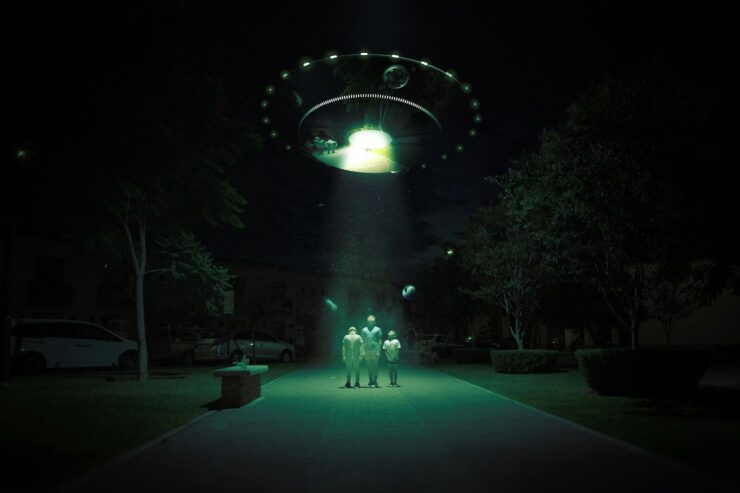There were science fiction and fantasy books with lesbian and bi women in them, back in the 1980s, when was a kid. But I didn’t know about them. They existed, but not in the stacks of paperbacks I borrowed from my local public library.
So lately I’ve been making up for one of the failures of the time and place in which I was born. I’ve been on a reading jag, focusing on SFF books with F/F relationships. And there are many! (Although never enough.) What makes me happiest is the sheer diversity of the love stories I’ve found. I don’t mean only demographically, although that too. There are mature and complicated relationships and there are quick, passionate affairs. There are slow magical sagas and fast techno thrillers.
Here are five of the books I’ve enjoyed recently.
Ascension by Jacqueline Koyanagi
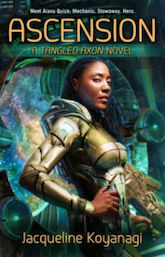 This space opera is so much fun, start to finish. Alana Quick is a sky surgeon (like an engineer, but for starships) with a chronic illness, an ex-wife, and a fraught relationship with her mystical sister. When a starship comes looking for said sister, Alana stows away in its cargo hold, hoping to end up with a job as an engineer.
This space opera is so much fun, start to finish. Alana Quick is a sky surgeon (like an engineer, but for starships) with a chronic illness, an ex-wife, and a fraught relationship with her mystical sister. When a starship comes looking for said sister, Alana stows away in its cargo hold, hoping to end up with a job as an engineer.
The brash, blonde starship captain, Tev Helix, is desperate to get some leverage over a transdimensional corporation, a corporation that can save the ship’s pilot from a slow, strange death. Alana finds herself desperate for Tev. But Tev already has a partner, and that’s only one of the complications Alana tries to untangle.
The science in this book is cool and magical (the other ship’s engineer is a man who might be a wolf if you look at him from the right angle), but the concerns of the characters are grounded and just so real, from the costs of medicines to the complexity of human relationships. It’s sexy and fast-paced, and most of the characters are women.
The Ruin of Angels by Max Gladstone
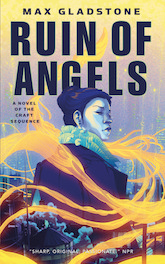 This is the sixth book in Max Gladstone’s Craft Sequence, and full of his particular brand of delicious magic and ideological conflict. It’s also full of female characters, which creates the space for the book to show not one but two major female-female romances.
This is the sixth book in Max Gladstone’s Craft Sequence, and full of his particular brand of delicious magic and ideological conflict. It’s also full of female characters, which creates the space for the book to show not one but two major female-female romances.
Kai Pohala is a priest who’s come to the new city of Agdel Lex for a business deal. There she encounters glimpses of a ruined city that keeps asserting itself in the cracks of the newly imposed one, despite the best efforts of the creepy Rectification Authority. She also encounters her sister, Ley, a brilliant artist who has managed to push everyone away from her, including her sister and her ex-girlfriend, Zeddig. When Ley tries to put everything right, it all goes very wrong.
Ley enlists Zeddig’s help for a dangerous heist, and the rest of Zeddig’s crew of delvers: people who take short, dangerous trips into the old city to retrieve artifacts. The relationship between Zeddig and Ley is always fiery, as they try to figure out how they can love each other when they can’t trust each other.
Then there are the other delvers, Gal and Raymet. Gal is a knight in exile, a shining, golden-haired paragon. Raymet is a messy scholar who finds Gal fascinating and infuriating and can’t figure out how to communicate with her; it’s as if they’re speaking different emotional languages. Eventually, they’re forced into a situation where all they have is words, and they find the right ones after some flailing about, which gives Gladstone the opportunity for the glorious line of dialog: “But a Knight may rescue her lady from a tower. That is practically what Knights are for.”
The Winged Histories by Sofia Samatar
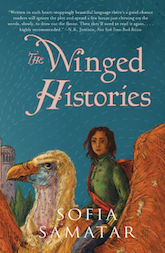 Set in the same world as A Stranger in Olondria, this book is, as the title suggests, a collection of histories. These are told stories about a time of war, and the story-tellers are, for the most part, four women, each of whom uses words in her own way. Each of the stories is like a painting on a pane of glass, beautiful in its own right and adding to our understanding of the whole when it’s placed in front of the one before it.
Set in the same world as A Stranger in Olondria, this book is, as the title suggests, a collection of histories. These are told stories about a time of war, and the story-tellers are, for the most part, four women, each of whom uses words in her own way. Each of the stories is like a painting on a pane of glass, beautiful in its own right and adding to our understanding of the whole when it’s placed in front of the one before it.
Tav is a noblewoman from a powerful family who goes off to become a soldier and then helps to lead a rebellion. She’s in love with Seren, a nomadic poet. While Tav seems dazzled by Seren and uncertain about what their future holds, Seren’s lyrical section of the book portrays their relationship clearly and wholly, as though she can see the past and the future all at once.
There’s so much world in every one of Samatar’s sentences that it demands the reader slow down, not only to understand the political and cultural context of these histories but also to ponder the thematic questions and savour the language.
Huntress by Malinda Lo
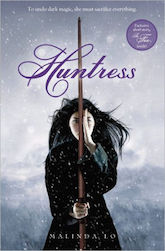 Kaede and Taisin are two 17-year-old girls, chosen to go on a quest to the city of the Fairy Queen, to bring nature back into balance and save their world. Kaede is a fighter, and Taisin is a sage. Gradually, they fall in love.
Kaede and Taisin are two 17-year-old girls, chosen to go on a quest to the city of the Fairy Queen, to bring nature back into balance and save their world. Kaede is a fighter, and Taisin is a sage. Gradually, they fall in love.
Huntress is a prequel to Ash and set in the same world, in a different time period. I’m drawn to those sorts of prequels, probably because I read both of Robin McKinley’s Damar books until they fell apart, when I was a teenager. And the love story in Huntress reminds me a little of the great and abiding love that develops in McKinley’s The Hero and the Crown. In Huntress, Taisin must choose between her duty and her love for Kaede, just as Aerin must choose between her duty and her love for Luthe. In both cases, choosing duty wouldn’t mean not choosing love; it would just mean separating from the beloved, perhaps for a very long and painful time.
Everfair by Nisi Shawl
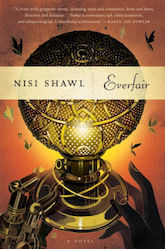 Everfair is an alternate history that re-imagines and re-examines one of the worst atrocities of the 19th century: King Leopold of Belgium’s murderous Congo Free State. What if African-American missionaries and British socialists had bought a piece of land from Leopold and tried to establish a utopia there, a haven for refugees and enslaved people? Of course, the land isn’t Leopold’s to sell in the first place, and the rightful king of that land naturally has some opinions.
Everfair is an alternate history that re-imagines and re-examines one of the worst atrocities of the 19th century: King Leopold of Belgium’s murderous Congo Free State. What if African-American missionaries and British socialists had bought a piece of land from Leopold and tried to establish a utopia there, a haven for refugees and enslaved people? Of course, the land isn’t Leopold’s to sell in the first place, and the rightful king of that land naturally has some opinions.
Everfair is a complex, fascinating critique of colonialism and white supremacy—and it uses steampunk to do it. The airships and prosthetics of Everfair develop out of the state of war and the needs of its characters.
Two of those characters are women in love. Lisette Toutournier begins the novel as mistress to an older Englishman who engages her as a nanny to his children. She falls in love with his wife, Daisy Albin. These two women are passionate soulmates but the racist, patriarchal and colonial toxicity of their world continually buffets and disrupts their relationship.
Everfair is a book about nations, in which nothing is easy and nobody is right. Throughout, the passion of these two women is a constant refrain, like hope, as Daisy whispers in Lisette’s ear: “Where can we meet? Chérie—how soon?”
 Kate Heartfield’s time-travel novella, Alice Payne Arrives, is coming Nov. 6 from Tor.com Publishing, to be followed by a sequel in March. She is also the author of the historical fantasy novel Armed in Her Fashion (CZP) and the novella The Course of True Love (Abaddon). Kate’s interactive novel, The Road to Canterbury, is available from Choice of Games. She is a former journalist and lives in Ottawa, Canada.
Kate Heartfield’s time-travel novella, Alice Payne Arrives, is coming Nov. 6 from Tor.com Publishing, to be followed by a sequel in March. She is also the author of the historical fantasy novel Armed in Her Fashion (CZP) and the novella The Course of True Love (Abaddon). Kate’s interactive novel, The Road to Canterbury, is available from Choice of Games. She is a former journalist and lives in Ottawa, Canada.












